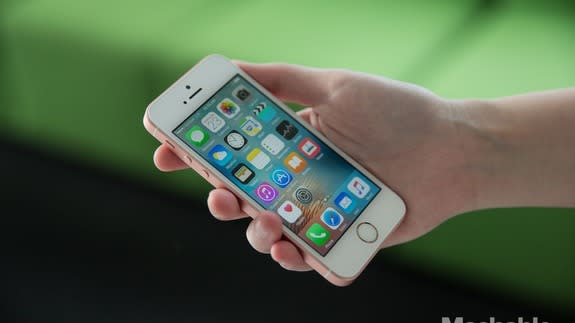The one silver lining in Apple's earnings report: iPhone SE demand

Apple on Tuesday announced its quarterly earnings, and, for the first time since 2003, the company made less money than it had in the same quarter of the previous year.
Even though Apple warned investors back in January this was going to happen, it can’t be easy for investors to see a 13-year growth streak come to an end.
SEE ALSO: iPhone SE review: Turns out, good things do come in small packages
As everyone knows, the only number that really matters when it comes to Apple's financials is iPhone sales. And in that case, the company sold 51 million devices. That’s an incredible number, but it's still down 18% from the same period in 2015.
But even more distressingly, Apple’s sales in China — which had been a big driver for its growth over the last few years — were down 26% year-over-year.
This has led many analysts to question — yet again — whether we’ve reached peak iPhone.
For his part on the earnings call, Apple CEO Tim Cook conceded that the smartphone market “is mature” and “it is not currently growing.” Cook did say he was “very optimistic” about the future and that “the market, and particularly us, will grow again,” but it does raise questions about growth opportunities. Especially when the iPhone accounts for two-thirds of Apple’s revenue.
The iPhone SE surprise
On the earnings call, Apple tried to spin numbers about upgrade cycles and the new customer wins it's making over Android users. And that’s all well and good. But the device that might have the biggest impact on sales in the short term wasn’t even counted in the Q2 2016 earnings — the iPhone SE.
In the prepared remarks and during the question-and-answer period on the earnings call, Apple executives repeatedly cited the iPhone SE as a highlight for the company.
The product didn’t go on sale until March 31 so none of the sales were accounted in this earnings report, but Apple made a point to say that “demand has been very strong,” adding that it “exceeds supply at this point.”
In response to an analysts question, Cook went further saying that “it is clear that there is a demand there even much beyond what we thought.”
In other words, it looks like a hit. Moreover, it’s attracting a new type of customer for Apple.
“We are attracting customers that we previously didn’t attract. That’s really great,” Cook said in response to an question from an analyst.
Responding to Piper Jaffray’s Gene Munster, Tim Cook had this to say about the iPhone SE and its potential customer:
Of course, the downside of the iPhone SE’s success is that its lower price point will drive the average selling price (ASP) of the iPhone down. Still, given the choice between selling fewer phones or selling more phones at a lower ASP, from an optics/growth perspective, selling more phones is probably the better strategy.
Is this enough?
Of course, the billion-dollar question will be, is the iPhone SE enough to stave off the doom and gloom of declining iPhone sales?
And that’s a harder question to answer. With its lower selling price, the iPhone SE opens Apple up to markets where it hasn’t previously had a large presence. It’s possible the iPhone SE could find greater success in markets like India, where Apple has an increased focus.
But the longer-term challenges for iPhone growth — and smartphone growth in general — still remain.
The iPhone 7 will presumably be out this Fall and if rumors (and conventional wisdom) are true, it will feature a brand new design.
The best case scenario would be for the iPhone 7 to have the same kind of adoption/upgrade cycle as the iPhone 6 and iPhone 6 Plus. Now, this is probably not going to happen.
When the iPhone 6 and iPhone 6 Plus launched, there was pent up demand for larger phones. Moreover, that was the first launch where the iPhone was available on the largest wireless carrier in China, which also had a big impact on sales.
Still, Apple has to hope it can spur demand with the iPhone 7 in the same way it did with the iPhone 6 and iPhone 6 Plus.
The iPhone SE may be able to drive demand from the lower-end of the price market — and it might be able to bring new customers to Apple — but the iPhone 7 needs to be a hit now more than ever.

